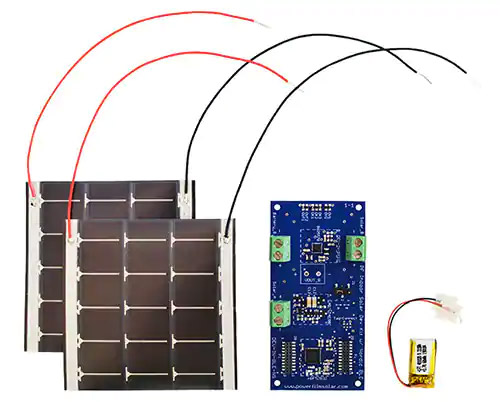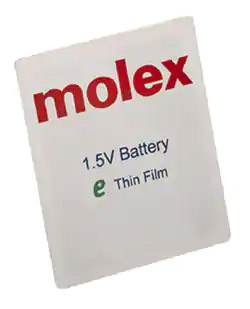The electronics industry has impacted our environment and will continue having an impact as it continues to evolve. On the positive side, increasing use of electronics in power generation, lighting, motor control, sensors, and many other applications has provided dramatic improvements in energy efficiency and the ability to monitor and control our environment. On the negative side, the proliferation of electronic products has resulted in significant e-waste in our landfills, increased energy usage, and release of hazardous materials into our environment. But what can be done to combat the problem and allow continued progress along this electronics evolution path? Several new ideas and trends are being explored in the industry to find a solution.
Lower power consumption
One newer trend relating to the environmental impact and sustainability realm is the desire for lower power consumption. It’s not uncommon for people to have five or six battery-operated devices on them at any given time – think a mobile phone, smart watch, laptop, tablet, smart headphones, and more. The general trend seen in this area is a sustained effort to produce lower power requirements for these devices. Lower power consumption allows for smaller batteries and smaller devices. Another benefit of lower power for device users is longer time between charges or battery replacement.
A specific trend emerging is on how batteries are charged. Battery chemistries require unique charging profiles to maximize battery life and, especially, keep them safe as some chemistries are known to explode if improperly charged. Charging has become a sophisticated application that requires monitoring battery temperature, voltage, and current with closed-loop, variable adjustment during the charging cycle. Proper charging also increases battery life expectancy. As newer chemistries are developed, this trend for charging sophistication is expected to persist. Longer battery life contributes to longer use of a device and ultimately less e-waste in our landfills.
There is a green, organic energy storage technology that is popular, but not as pervasive as batteries: super capacitors. They don’t have the capacity or long-term storage capability of traditional batteries, but they can be charged much faster and can sustain many more recharge cycles than traditional rechargeable batteries. Since super capacitors have a self-discharge time that is typically measured in weeks, potential applications need to take this into account. Multiple suppliers now provide super capacitors and Figure 1 shows examples of KEMET’s super capacitor package options. Some devices that utilize capacitors rather than batteries can even be charged using normal ambient lighting. This makes the device a natural energy harvester, using light as an energy source to regularly charge a capacitor to provide useful amounts of energy. Motion, heat differential, and light are probably the most popular forms of energy harvesting currently.

Figure 1: Various KEMET supercapacitor package styles. (Image source: KEMET)
Energy harvesting
Energy harvesting is the process when energy is derived from external sources like solar power, thermal energy, wind energy, and others, and then is captured and stored. Typical applications are small, wireless autonomous devices like those used in wearable devices and wireless sensor networks. Figure 2 illustrates some Littelfuse IXOLAR™ solar cells typically used to power small low-power electronic devices.

Figure 2: Littelfuse IXOLAR™ small solar cells. (Image source: Littelfuse)
Energy harvesting dates back to the windmill and waterwheel, but a driving force behind the search for new energy harvesting devices is the desire to power sensor networks and mobile devices without batteries. A popular and growing use case is powering of remote sensors deployed in the field that are difficult and costly to service for battery replacement. There is also considerable interest in energy harvesting to address the issues of climate change and global warming.
Digi-Key offers many types of energy harvesting evaluation and demonstration boards as well as the individual power management chips. Power Film's indoor solar kit (shown in Figure 3) demonstrates a complete solution and includes their indoor solar panels as well as an Energy Harvesting and Storage Power Management Evaluation Board and rechargeable battery. The evaluation board incorporates Nordic’s nRF52832 BLE module and Texas Instruments’ BQ25570 energy harvesting/power management IC.

Figure 3: Power Film indoor solar kit. (Image source: Power Film)
Disposable thin-film batteries
Another sustainable alternative option is flexible, printed, thin-film batteries known as solid-state thin-film batteries. Solid-state batteries are just that – solid – with no gels or liquids inside their structure. They are designed and manufactured with very thin layers or films of materials, and their thin design is part of what makes them so flexible and attractive to the wearable sensing market. Many of these solid-state thin-film batteries meet market needs for thinness and flexibility, but they are often still designed with lithium-based chemistries or other chemistries that make them potentially toxic to the environment.
The widespread use and toxicity of certain batteries becomes problematic when considering the vast quantity of batteries thrown away every year. As demand for electronic devices such as laptops and smartphones has increased, so has their contribution to the amount of waste generated each year. Batteries are generally not biodegradable and when carelessly thrown away can run the risk of releasing toxic metals and chemicals into the ground. Many countries now have regulations around battery disposal and offer recycling programs. These programs help recycle the metal from batteries and can help curb the negative impacts of battery disposal on the environment. The United States Environmental Protection Agency maintains a website with a number of initiatives and programs for the sustainable management of electronics.
Battery disposal regulations, coupled with the increasing need to power and connect more devices to the Internet of Things, are motivating companies to explore safe and sustainable alternatives to hazardous battery chemistries. Molex’s line of thin-film batteries is one such solution (Figure 4). Unlike their lithium battery cousins, these batteries are designed with a zinc manganese dioxide chemistry and are safer and more convenient for the end user to dispose.

Figure 4: Molex thin film battery. (Image source: Molex)
Real-life use cases help highlight applications where features such as low-profile, flexibility, disposability, and small footprint are highly valued and where it can be expected that the thin-film battery market will continue growing. One particularly interesting use case is utilizing thin-film batteries in ultra-high frequency (UHF) smart temperature tags. The tags are about the size of a credit card and a little thicker than standard printer paper. They are used by cold chain logistics managers for temperature-sensitive products, such as pharmaceutical products, perishable foods, and flowers. These smart temperature tags utilize a combination of technologies including radio-frequency identification (RFID), intelligent temperature sensing, and printed thin-film batteries to accurately track time and temperature during product transportation and storage.
Additionally, the consumer, cosmetics, and medical markets are experimenting with applications for thin-film batteries. At the crossroads of the consumer and cosmetics markets is an electrified eye-mask application. The mask features a microcurrent device composed of the flexible printed battery, electrodes, adhesive tape and a covering sheet. Placement of the patch on the skin instantaneously creates a current loop, and the cosmetic flows from the active electrodes in the mask to the skin. Other consumer market applications of thin-film batteries are in wearable electronic and sports monitoring devices, including a low-energy Bluetooth (BLE) sensor patch that gets attached to the side of a golf club head to measure acceleration and angular velocity. Medical applications for disposable thin-film batteries include patient diagnostic, therapeutic, and monitoring devices.
In the last several decades, great strides have been made in the development of new and different types of energy sources and batteries to satisfy a world increasingly hungry to power the many devices and applications in use every day. More recently companies have begun to develop capacitors and batteries made with materials that are abundant, sustainable, and safe for both the environment and people. Energy harvesting of naturally occurring energies is another sustainable practice that many companies are exploring. Markets such as industrial, Internet of Things, consumer, and medical have already been successfully experimenting and manufacturing product powered by thin-film batteries, super capacitors and energy harvested devices. More development is needed to increase the capacity and manufacturability of these methods, but one pressing question continues to drive developers: where can these methods and practices be used next?
